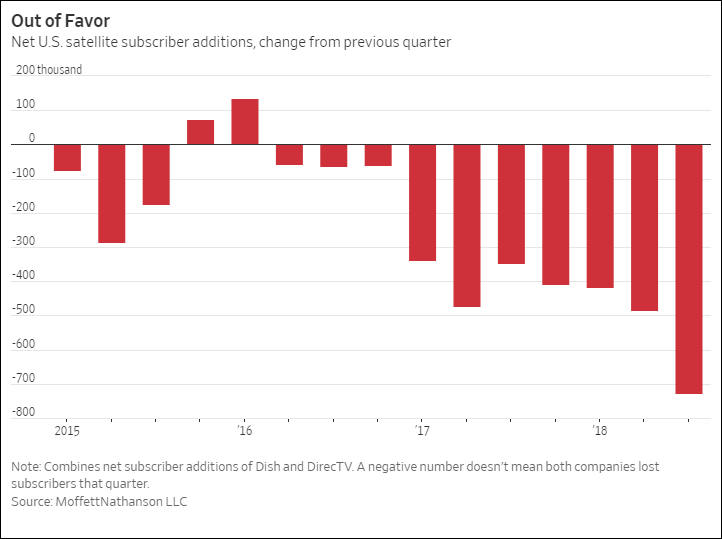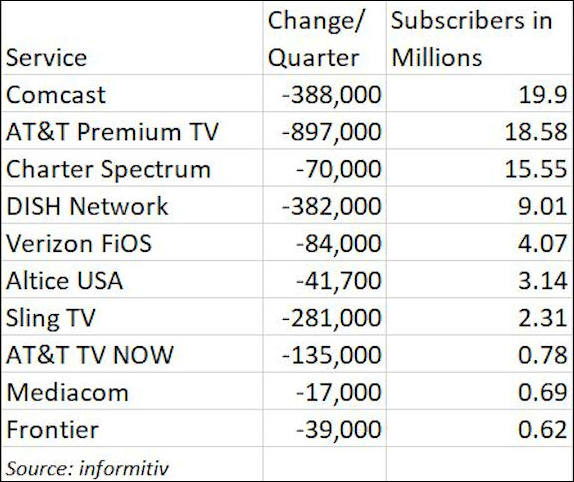
It allows to keep PV going, with more focus towards AI, but keeping be one of the few truly independent places.
-
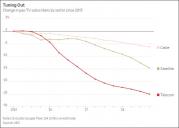
 sa5701.jpg730 x 523 - 35K
sa5701.jpg730 x 523 - 35K
 sa5702.jpg722 x 539 - 43K
sa5702.jpg722 x 539 - 43K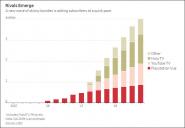
 sa5705.jpg755 x 523 - 37K
sa5705.jpg755 x 523 - 37K -
ESPN lost 2 million subscribers in the past 12 months alone, with its base declining from 88 million in 2017 to 86 million.
Though it wasn't the only Disney mainstay that took a hit this year -- the Disney Channel, Disney Junior and Disney XD all lost lost 3 million subs,
-
Pay TV is one of the worst examples of capitalism. They repackage/retransmit what is free, and add many junk channels such as Home Shopping Network, and charge the consumers dearly, averaging $100 per month. The other channels are also filled with commercials, roughly 4 minutes of commercials for every 5 minutes of programming. The pay TV providers therefore make huge amounts of money from bot the advertisers and end consumers.
I work for one of the pay TV companies listed above, and get a pay TV program package for free. But I essentially never watch the garbage it provides. Generally I only watch History Channel, National Geographic, and Forensic Files. I use Roku and the internet for those channels. In addition to the convenience, Roku and the internal have far less garbage than the pay TV in general, The Forensic Files in particular, which is essentially commercial free from the YouTube, for example.
For the news, I watch free TV channels over the air, and the quality is much better than the pay TV (less compression). With a one-time investment of $25, I bought a small indoor antenna from which I get more than 60 free TV channels where I live, including the major networks such as the CNN, CBS, ABC, etc.
Three years ago I bought an LG OLED TV, and to my surprise, it came with a huge number of free IP TV channels in the name of LG Channel Plus. They even have a dedicated free channel of Sports Illustrated. For those of us who do not already know, it is channel IP-738. Full of beautiful models in swimming wear, 24/7. I feel obliged to watch it once in a while, haha.
I will also receive a small pension from another one of the pay TV providers listed above, when I retire. Therefore I wish them well. But I will never pay for their junk contents, nor will watch them. The alternatives are free and getting better every day. The pay TV companies must adapt or die.
-
"At 63% of occupied households, traditional pay-TV penetration has reached a level not previously seen since roughly 1995," Moffett wrote. "There are now as many non-subscribing households (46M) as there were pay-TV subscribers in 1988."
-
Pay TV now depend on the lack of good optical cable based internet in most of US.
As soon as we move to standard 1Gbit and later 10Gbit on same optical cable it'll be all done.
-
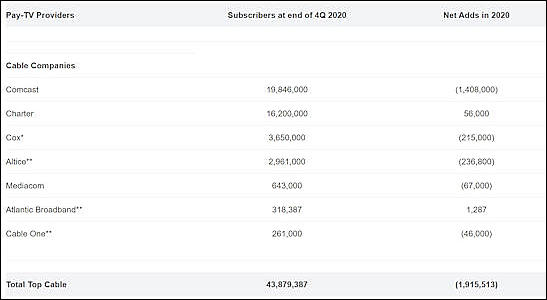
The top U.S. pay-TV providers lost 5.9% of subscribers in 2020, compared to 5.2% in 2019, according to new data released this week the Leichtman Research Group.
The largest U.S. pay-TV services, which account for about 95% of the market, lost some 5,120,000 net video subscribers in 2020. That compared to a net loss 4,795,000 in 2019.
The total U.S. pay-TV market is now 81.3 million.
The the top seven cable companies account for 43.9 million video subscribers, while satellite TV services account for 21.8 million.
The top telco TV services share 7.9 million subscribers, while the the top reporting Internet-delivered (vMVPD) pay-TV services have 7.7 million subscribers.
Breaking down the losses, the satellite TV services lost about 3,440,000 subscribers in 2020, compared to 3,700,000 in 2020, down from a loss of about 3,700,000 subscribers in 2019.
The top seven cable companies lost about 1,915,000 video subscribers in 2020, compared to 1,560,000 subscribers in 2019.

 sa16614.jpg547 x 300 - 19K
sa16614.jpg547 x 300 - 19K
Howdy, Stranger!
It looks like you're new here. If you want to get involved, click one of these buttons!
Categories
- Topics List23,992
- Blog5,725
- General and News1,354
- Hacks and Patches1,153
- ↳ Top Settings33
- ↳ Beginners256
- ↳ Archives402
- ↳ Hacks News and Development56
- Cameras2,367
- ↳ Panasonic995
- ↳ Canon118
- ↳ Sony156
- ↳ Nikon96
- ↳ Pentax and Samsung70
- ↳ Olympus and Fujifilm101
- ↳ Compacts and Camcorders300
- ↳ Smartphones for video97
- ↳ Pro Video Cameras191
- ↳ BlackMagic and other raw cameras116
- Skill1,960
- ↳ Business and distribution66
- ↳ Preparation, scripts and legal38
- ↳ Art149
- ↳ Import, Convert, Exporting291
- ↳ Editors191
- ↳ Effects and stunts115
- ↳ Color grading197
- ↳ Sound and Music280
- ↳ Lighting96
- ↳ Software and storage tips266
- Gear5,420
- ↳ Filters, Adapters, Matte boxes344
- ↳ Lenses1,582
- ↳ Follow focus and gears93
- ↳ Sound499
- ↳ Lighting gear314
- ↳ Camera movement230
- ↳ Gimbals and copters302
- ↳ Rigs and related stuff273
- ↳ Power solutions83
- ↳ Monitors and viewfinders340
- ↳ Tripods and fluid heads139
- ↳ Storage286
- ↳ Computers and studio gear560
- ↳ VR and 3D248
- Showcase1,859
- Marketplace2,834
- Offtopic1,320



